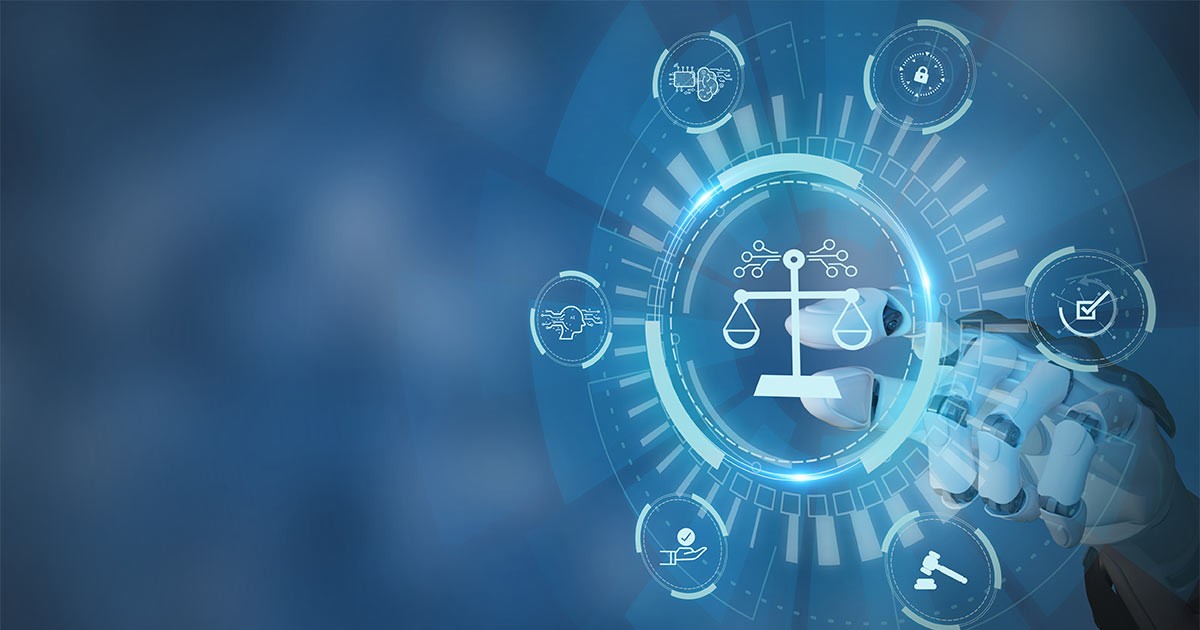AI And The Illusion Of Learning: Promoting Responsible AI Practices

Table of Contents
Understanding the "Illusion of Learning" in AI
The term "artificial intelligence" often evokes images of sentient machines capable of independent thought and learning. However, the reality is quite different. While AI systems can perform remarkable feats, their learning process differs significantly from human learning. Human learning involves understanding, context, and reasoning; AI, on the other hand, relies primarily on pattern recognition. This distinction is crucial in understanding the limitations of current AI and the potential pitfalls of unchecked development.
-
AI relies on pattern recognition, not comprehension: AI algorithms identify patterns in vast datasets to make predictions or decisions. They don't genuinely "understand" the meaning or implications of the data they process. For example, an AI system can identify a cat in an image based on pixel patterns but lacks the conceptual understanding of what a cat is.
-
AI can be biased based on the data it's trained on: AI models learn from the data they are fed. If the data reflects existing societal biases (e.g., gender, racial), the AI system will likely perpetuate and even amplify those biases in its outputs. This can lead to unfair or discriminatory outcomes.
-
AI lacks context and common sense reasoning: AI systems struggle with tasks requiring common sense or understanding of context. They may fail to interpret nuances in language or situations that are easily understood by humans.
-
Overfitting: Overfitting occurs when an AI model learns the training data too well, including its noise and outliers. This leads to poor performance on new, unseen data, rendering the model unreliable and impractical in real-world applications. Addressing overfitting requires careful model selection, data preprocessing, and validation techniques.
The Dangers of Unchecked AI Development
The potential negative consequences of deploying AI systems without sufficient oversight and ethical considerations are significant. The illusion of learning can mask these dangers, leading to unintended and potentially harmful outcomes.
-
Algorithmic bias: Biased algorithms can lead to unfair or discriminatory outcomes in various applications, such as loan applications, hiring processes, and even criminal justice. This not only perpetuates existing inequalities but can also create new ones.
-
Lack of transparency and accountability: Many AI systems, particularly deep learning models, are "black boxes," making it difficult to understand how they arrive at their decisions. This lack of transparency makes it challenging to identify and correct errors or biases, hindering accountability.
-
Misuse of AI: AI technologies can be misused for surveillance, manipulation, and other ethically problematic purposes. Facial recognition technology, for example, raises serious privacy concerns.
-
Job displacement: Automation driven by AI is likely to displace workers in certain sectors, requiring proactive measures to mitigate the social and economic consequences.
Case Studies: Illustrating the Risks of Irresponsible AI
Several real-world examples highlight the risks of irresponsible AI deployment. For instance, biased facial recognition systems have shown higher error rates for people of color, leading to concerns about racial profiling. Similarly, AI-powered loan applications have been criticized for perpetuating existing credit inequalities. These cases underscore the need for rigorous testing, validation, and ethical considerations throughout the AI development lifecycle. (Further research into specific cases with links to reputable news sources would be beneficial here).
Promoting Responsible AI Practices: A Multi-faceted Approach
Developing and deploying AI responsibly requires a multi-faceted approach that addresses the technical, ethical, and societal challenges.
-
Data bias mitigation: Techniques like data augmentation, careful data selection, and algorithmic fairness methods are crucial to mitigate biases in AI systems. This involves actively addressing and correcting biases present in training data.
-
Explainable AI (XAI): Developing more explainable AI models allows us to understand how AI systems reach their conclusions, improving transparency and accountability. This helps identify and rectify errors and biases.
-
Robust testing and validation: Thorough testing and validation procedures are crucial to ensure the reliability and safety of AI systems before deployment. This includes testing for bias, robustness, and security vulnerabilities.
-
Ethical guidelines and frameworks: Establishing clear ethical guidelines and frameworks for AI development and deployment helps guide decision-making and promotes responsible innovation.
-
Regulations and oversight mechanisms: Appropriate regulations and oversight mechanisms are necessary to ensure that AI systems are developed and used responsibly, protecting individuals and society.
-
Human oversight and control: Maintaining human oversight and control over AI systems is vital to prevent unintended consequences and ensure ethical use.
The Role of Education and Collaboration in Responsible AI
Education and collaboration are paramount in promoting responsible AI practices. It’s crucial to educate developers, policymakers, and the public about the capabilities and limitations of AI, as well as the ethical considerations involved.
-
Interdisciplinary collaboration: Addressing the challenges of responsible AI requires interdisciplinary collaboration among AI researchers, ethicists, legal experts, social scientists, and policymakers.
-
Open discussions and critical analysis: Promoting open discussions and critical analysis of AI technologies fosters a culture of responsibility and helps identify potential risks early on.
-
Continuous learning and adaptation: The field of AI is constantly evolving. Continuous learning and adaptation are vital to keep up with technological advancements and address emerging challenges.
Conclusion
The illusion of learning in AI can lead to unchecked development and deployment, resulting in potentially harmful consequences. We've explored the crucial need for responsible AI practices, encompassing data bias mitigation, explainable AI, robust testing, ethical guidelines, and regulatory frameworks. Collaboration and education are key to navigating the complexities of AI and ensuring its ethical development and use. The future of AI hinges on our commitment to responsible development. By actively engaging in ethical discussions, supporting research in responsible AI, and demanding transparency and accountability from AI developers, we can harness the transformative power of AI while mitigating its risks. Let's work together to build a future where AI benefits all of humanity—a future guided by the principles of responsible AI.

Featured Posts
-
 Alberta Wildfires A Looming Threat To Oil Production
May 31, 2025
Alberta Wildfires A Looming Threat To Oil Production
May 31, 2025 -
 Glastonbury Festival Securing Coach Resale Tickets A Comprehensive Guide
May 31, 2025
Glastonbury Festival Securing Coach Resale Tickets A Comprehensive Guide
May 31, 2025 -
 Sous Valorisation De Sanofi Comparaison Avec Les Laboratoires Pharmaceutiques Europeens
May 31, 2025
Sous Valorisation De Sanofi Comparaison Avec Les Laboratoires Pharmaceutiques Europeens
May 31, 2025 -
 My Dragons Den Experience Whats Real And Whats Not
May 31, 2025
My Dragons Den Experience Whats Real And Whats Not
May 31, 2025 -
 Bernard Kerik Key Figure In 9 11 Response Dies At 69
May 31, 2025
Bernard Kerik Key Figure In 9 11 Response Dies At 69
May 31, 2025
